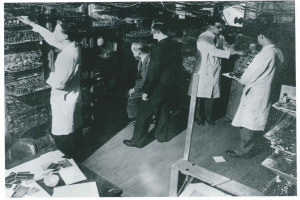On 21st June 1948, a major breakthrough took place at the University of Manchester, which would change the history of computing.
65 years ago today, the Manchester Small Scale Experimental Machine (also known as ‘The Baby’) became the first computer ever to run a program electronically stored in its memory. Prior to this date, programs had always been run on paper tape or hardwired in.
It’s been described as the birth of software.
To celebrate the anniversary, Google has produced a short film telling the story of The Baby and its inventors, “Freddie” Williams, Tom Kilburn and Geoff Tootill. It includes archive footage and interviews with some of the city’s computer pioneers.
“Up to this point, computers had no cost-effective means of storing and flexibly accessing information in electronic form,” explained Professor Simon Lavington, a research student in Kilburn’s team in Manchester between 1962 and 1965.
“The 1948 Baby marked the start of the ‘digital revolution’. Manchester played a leading role in this revolution, just as it did in the Industrial Revolution 200 years earlier.”
The Baby was a test bed for the Williams-Kilburn tube, which enabled the storage of binary digits (bits) using a cathode ray tube.
The computer was the first in a number of innovations to come from the University of Manchester, which would later partner with Ferranti Ltd to produce Ferranti Mark 1 in 1951 – the first computer to be sold commercially. Then, over a decade later, the Ferranti Atlas, the most powerful computer in the world.
“The greatest problem facing all the early computer design groups was how to devise a suitable memory, or storage, system. The University of Manchester was the first to get its storage system working at electronic speeds – it was the first RAM or random-access memory,” continued Professor Lavington.
“The partnership between the University and Ferranti Ltd, inspired by the Baby, went on to produce much of the UK’s total computing power up to the mid-1960s.”
Sadly nothing remains of the original Baby, although a working replica is on display at the Museum of Science and Industry.









